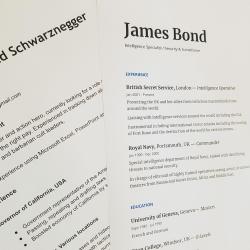How to Write a Resume for a Career Change
Transitioning into a new career can be both exciting and challenging. One of the key components to making a successful shift is crafting a resume that highlights your transferable skills and showcases your potential in your new field. Here’s a step-by-step guide to writing a resume when you're aiming for a career change.
Understanding Transferable Skills
One of the cornerstones of a career change resume is the effective presentation of transferable skills. These are skills you’ve acquired in your current or previous roles that are applicable in a different industry. Examples might include leadership, communication, problem-solving, or project management. Identifying these skills is a critical first step.
1. Research Your New Field
Before you start revising your resume, spend some time researching the industry you want to break into. Understand the required skills, certifications, and common job titles. Look at job descriptions to identify what employers prioritize. LinkedIn is a great resource for this, as you can view profiles of professionals who have successfully transitioned into your desired field.
2. Choose the Right Resume Format
For a career change, a functional or hybrid (combination) resume format is often more effective than a chronological one.
-
Functional Resume: Focuses more on skills and areas of expertise rather than employment history. This format allows you to highlight your transferable skills upfront.
-
Hybrid/Combination Resume: Merges the strengths of both chronological and functional resumes, featuring a skills section while also providing a brief employment history.
3. Create a Compelling Career Summary or Objective
Start your resume with a strong career summary or objective. This is your opportunity to articulate your career goals and express why you’re interested in the new field.
Example Objective:
“Goal-oriented and passionate marketing professional with over 8 years of experience in digital content strategy, seeking to leverage extensive expertise in content creation and project management to drive improved user engagement in a digital marketing role."
4. Highlight Transferable Skills
Create a dedicated section for your transferable skills and make it detailed. Use bullet points to list specific examples of how you’ve showcased these skills in past roles.
Example:
- Leadership: Successfully led a team of five to exceed quarterly sales targets by 20% through innovative promotions and strategic partner collaborations.
- Project Management: Managed end-to-end development of a company-wide CRM system, improving customer satisfaction scores by 15%.
5. Tailor Your Work Experience
In the work experience section, emphasize achievements and responsibilities that relate to your new career. Use language and terminology common in the new industry where possible.
Example for a teacher transitioning to a corporate trainer:
- Developed and executed comprehensive training programs for groups of 30+ students, achieving a 95% satisfaction rate.
- Utilized diverse instructional techniques and strategies to engage and motivate participants, fostering a collaborative learning environment.
6. Include Relevant Education and Certifications
Education is important, especially if it's directly related to your new career. If you’ve taken any courses or certifications relevant to the new field, be sure to include them.
7. Complement with a Strong Cover Letter
Since a resume doesn’t completely capture your reasons for changing careers, a cover letter is a perfect place to elaborate on your story. Explain your reasons for the career change and how your previous experience makes you a strong fit for the new role.
8. Proofread and Revise
An error-free resume reflects professionalism and attention to detail. Carefully proofread your resume, and consider having someone with expertise in the new field review it.
Conclusion
Changing careers is a significant step that requires careful planning. Your resume is a crucial tool in this process, serving as the bridge between your past experience and your future aspirations. By focusing on transferable skills, choosing the appropriate format, and clearly presenting your goals and achievements, you can create a resume that opens the door to new opportunities in your desired field.






















